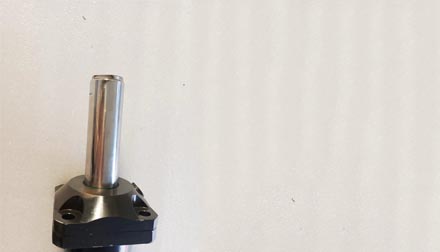Nov . 22, 2024 19:11 Back to list
china engine driven hydraulic power unit
The Advancements and Applications of Engine-Driven Hydraulic Power Units in China
In the rapidly evolving industrial landscape of China, engine-driven hydraulic power units (HPUs) have emerged as essential tools for various sectors, including construction, agriculture, marine, and mining. These units provide significant advantages by harnessing the power of internal combustion engines to operate hydraulic systems, making them increasingly popular in scenarios where electrical power sources are either unavailable or impractical.
Understanding Engine-Driven Hydraulic Power Units
Engine-driven hydraulic power units consist primarily of an internal combustion engine, hydraulic pump, reservoir, and control system. The engine serves as the prime mover, converting fuel into mechanical energy, which is then used to drive the hydraulic pump. The pump generates hydraulic pressure, allowing operators to control various hydraulic mechanisms, from heavy machinery to smaller tools.
The versatility of these units lies in their ability to operate efficiently in diverse environments. For instance, in construction projects located in remote areas, where electrical grids may not reach, engine-driven HPUs can provide reliable hydraulic power to operate diggers, cranes, and compactors. Similarly, in agricultural settings, farmers utilize these units to power equipment for plowing, irrigation, and material handling.
Market Dynamics and Growth
China's economic growth has driven increased investment in infrastructure development, which has, in turn, boosted demand for engineering equipment, including engine-driven hydraulic power units. The government's focus on urbanization and modernization of agricultural practices has led to significant growth in sectors such as construction and agriculture. Consequently, manufacturers of HPUs are ramping up production to meet this surging demand.
According to market analysis, the engine-driven hydraulic power unit market in China is expected to grow at a CAGR of approximately 6% over the next few years. This growth is spurred by technological advancements, such as improvements in engine efficiency and pollution control technologies, allowing units to offer higher performance with reduced environmental impact.
Technological Innovations
Recent innovations in engine-driven HPUs have made them more efficient and user-friendly. The integration of digital controls and IoT technology enables operators to monitor performance in real time, optimizing usage and improving safety. Enhanced fuel efficiency and reduced emissions from modern engines also help meet the stringent environmental regulations imposed by the Chinese government.
china engine driven hydraulic power unit

Moreover, manufacturers are increasingly experimenting with hybrid power solutions, combining conventional engines with electric drives
. This hybrid approach not only extends operational periods but also allows for the dual use of power sources, ensuring that operations can continue seamlessly even in adverse conditions.Applications in Various Sectors
1. Construction In construction, engine-driven HPUs are vital for powering hydraulic excavators, bulldozers, and loaders. Their portability ensures that builders can bring power exactly where it is needed, minimizing downtime and enhancing productivity.
2. Agriculture The agricultural sector benefits immensely from HPUs that drive irrigation systems, seed drills, and other mechanized equipment, enabling farmers to increase yield and efficiency. Their effectiveness in remote locations complements efforts to modernize China's agricultural practices.
3. Marine In maritime operations, engine-driven HPUs power winches, steering systems, and deck cranes, ensuring smooth operations in shipyards and offshore platforms.
4. Mining The mining industry leverages these power units for drilling, material handling, and processing, significantly improving operational efficiency while also enhancing safety measures in often hazardous environments.
Environmental Considerations
As the world shifts towards more sustainable practices, the Chinese government is encouraging the development of cleaner technologies within the hydraulic power sector. Many manufacturers are now focusing on producing engine-driven HPUs that adhere to environmental standards by optimizing engine performance and reducing emissions.
Conclusion
Engine-driven hydraulic power units represent a critical technological advancement in China's industrial evolution. Their ability to provide reliable hydraulic power across various applications highlights their importance in supporting economic growth. With ongoing innovations and a focus on sustainability, the future of these units in China appears promising, paving the way for more efficient and eco-friendly industrial operations. As industries continue to evolve, adapting to the challenges of modern demands, engine-driven HPUs will undoubtedly play a pivotal role in shaping the landscape of engineering and industrial applications in the country.
-
Fork Lift Power Units - Hebei Shenghan | Efficiency, Reliability
NewsJul.13,2025
-
1.5-Ton Turbocharged Cylinder-Hebei Shenghan|Hydraulic Solution,Energy Efficiency
NewsJul.13,2025
-
Auto Hoist Power Units-Hebei Shenghan|Efficiency&Industrial Lifting
NewsJul.13,2025
-
Double Acting Power Units-Hebei Shenghan|Hydraulic Solutions,Industrial Efficiency
NewsJul.13,2025
-
1.5 Ton Lifting Cylinder 70/82-40-290-535 - High-Performance Hydraulic Solution | Hebei Shenghan
NewsJul.13,2025
-
Fork Lift Power Units - Hebei Shenghan | Efficiency&Reliability
NewsJul.13,2025
